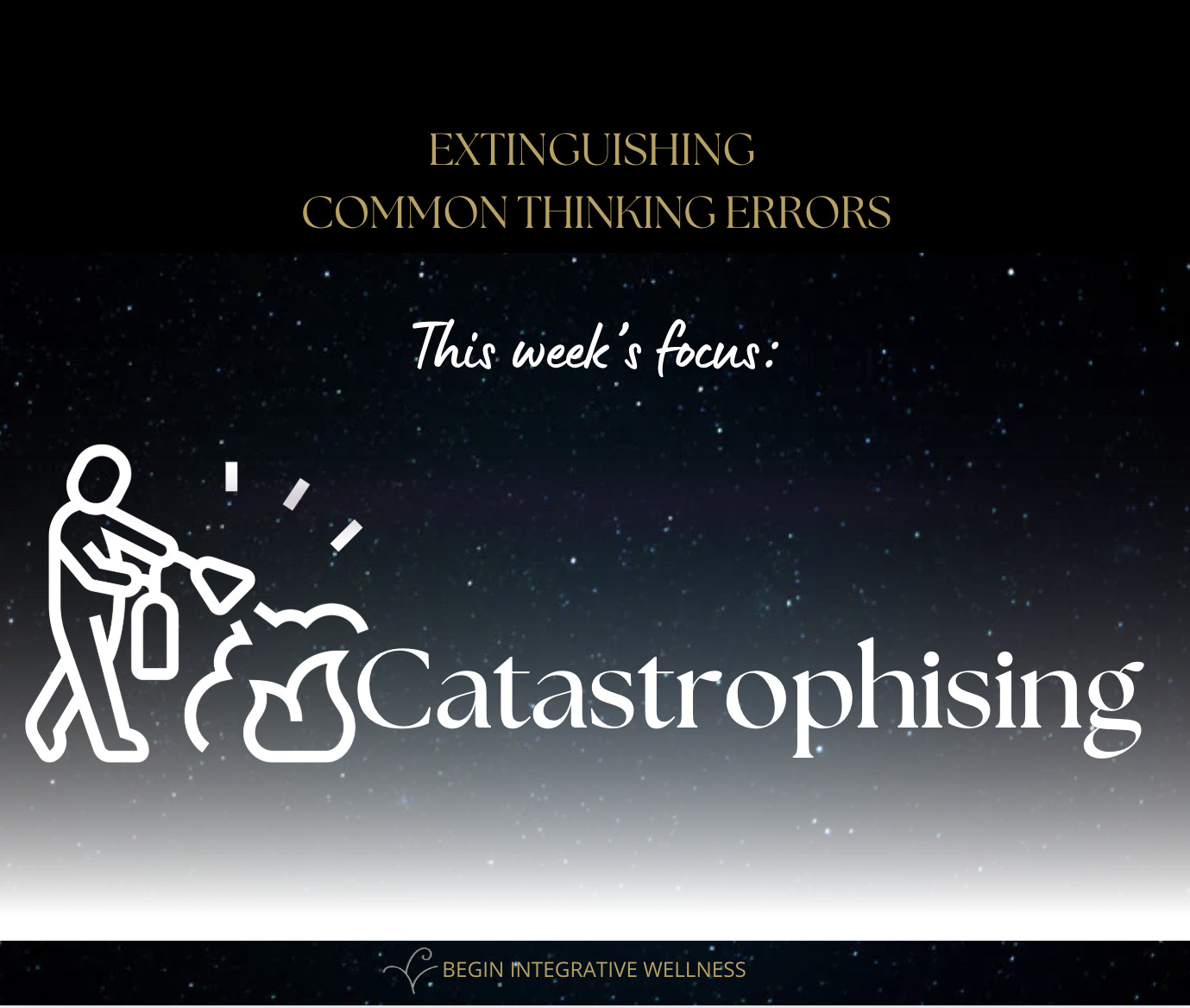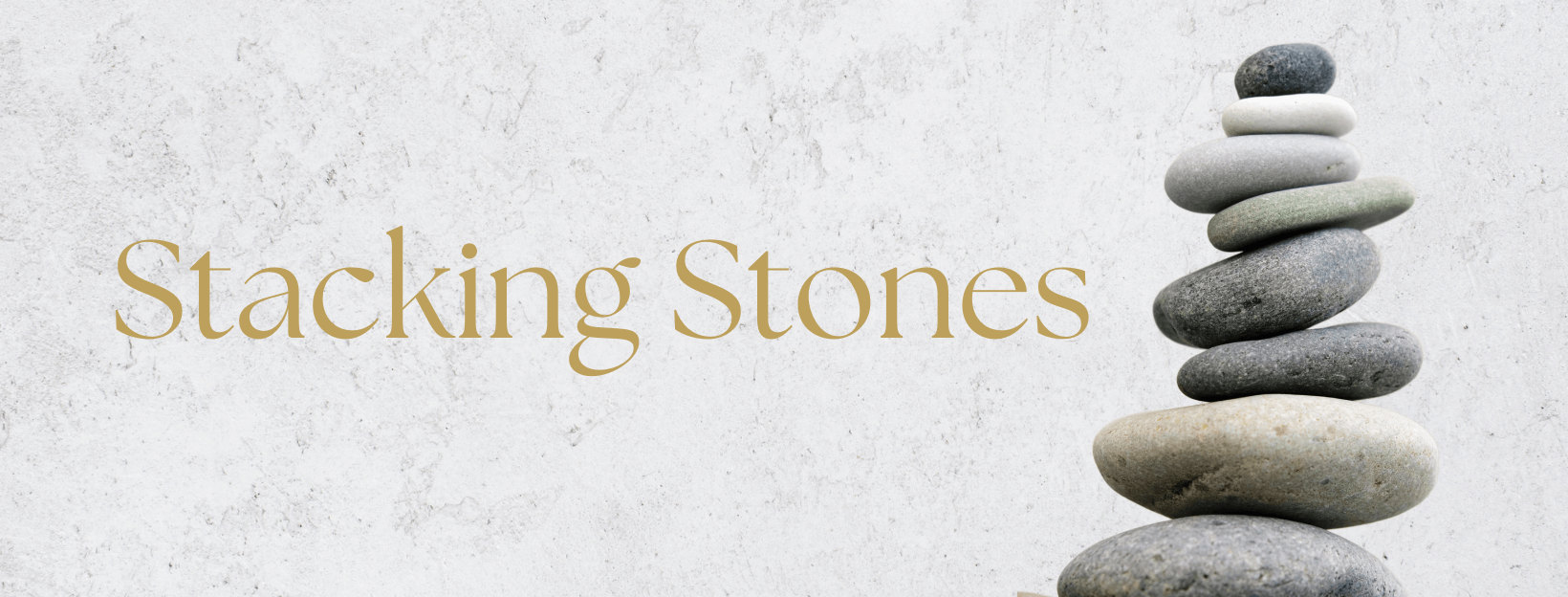
You get a text from your boss: “Can you come to my office?” Instantly, your mind leaps to the worst possible conclusion: You’re in trouble. You’ll be fired. You’ll lose your home. Your life is over. By the time you reach their door, your heart is racing, and you’re bracing for disaster… only to find out they just want your input on a new project.
Or maybe you’re a student, staring at a bad grade on a test, thinking: I’ll fail this class, never get into college, and ruin my future. Or perhaps you've had a fight with your teenager. They slam their bedroom door, and your mind spirals into: I've damaged my child. Our relationship is ruined forever This is going to affect their relationships in the future! Whatever stage of life you’re in, catastrophizing has a sneaky way of amplifying stress and self-doubt.
What is Catastrophizing?
Catastrophizing is a thinking error (or cognitive distortion, clinically speaking) where your brain fixates on the worst-case scenario, regardless of how unlikely it is. This thought pattern often shows up in moments of uncertainty, stress, or self-doubt, amplifying anxiety and leaving you feeling stuck or overwhelmed. When the task or challenge at hand feels beyond your abilities, skills, or resources to handle, thoughts like "I'm not enough" may crop up filling you with a sense of inadequacy and triggering catastrophic thinking.
Imagine a primitive human hearing a rustle in the bushes. Assuming it’s a predator might have saved their life, even if it was just the wind. This same survival mechanism, however, often misfires in modern life, treating an awkward email or a tight deadline as though it’s life-threatening. Today, the stressors are different, and we’re rarely given a physical release for our adrenaline and cortisol bursts. Instead of running from a predator which allows us to burn off all those stress chemicals, we sit with our racing hearts and spiraling thoughts, letting the tension build.
How Modern Stressors Make It Worse
Modern life is packed with triggers that fuel catastrophizing:
- Constant Connectivity: Social media and 24/7 news cycles bombard us with comparisons and bad news, making it easy to believe disaster is always around the corner. Our bodies respond to the images on the screen setting us up to physically remain in a state of vigilance, ready for whatever threatr may come our way.
- High Expectations: Society often pressures us to excel in every area—career, family, appearance—leaving us feeling inadequate when we fall short of achieving unreachable goals. Rather than recognizing that the expectations are the problem, many people internalize that it is due to their own shortcomings that they don't live up to society's impossible standards.
- Lack of Physical Release: Unlike our ancestors who could literally run off stress, modern humans often sit through it, compounding a sense of being "unwell" and contributing to feelings of helplessness.
Without a physical outlet or the space to reality test and develop healthy coping mechanisms, this heightened stress feeds the cycle of catastrophic thinking, making problems feel insurmountable.
Steps to Manage Catastrophizing
Cognitive Strategies
- Notice the Spiral: The first step is awareness. Pay attention to moments when your thoughts start snowballing. How can you notice these thoughts as they start? Does your brain speed up? Does your heart start to beat faster? Does your voice become clipped and edgy?
- Example: Your child brings home a bad grade, and you immediately think their academic future is doomed.
- Reality-Check Your Thoughts: Ask yourself:
- What evidence do I have that this will happen? Can I be SURE of the fearful thoughts that are creeping in? (Pro-tip: labeling the thought "this is fear, this is catastrophising" can be a powerful aide to help you step back and examine the thoughts more closely).
- What’s a more likely explanation? What is another way of looking at this situation? Even if you don't fullly buy-in to the new perpsctive, challenge yourself to at least come up with some other ideas about what is happening- doing so will slow down the stress response and can help get you into a calmer state of mind.
- How have I successfully managed similar challenges in the past? Recall concrete examples of past successes to remind yourself that you are capable of managing hard things.
- Reframe the Situation: Replace catastrophic thoughts with balanced ones.
- Example: Instead of "I’ll fail," try "I didn’t do well this time, but I can improve." Repeat the positive reframe to yourself as needed.
Spiritual Strategies
- Practice Grounding Through Gratitude: When your mind starts spiraling, pause to identify three things you’re grateful for in the moment. Gratitude helps anchor you in the present.
- Use Visualization: Picture yourself handling the situation calmly and effectively. This not only soothes your mind but it calms your body and can actually stop your amygdala (your brain's security guard) from firing. It also can boost your confidence as you picture your success.
Social Strategies
- Talk it Out: Share your fears with someone you trust. Often, verbalizing your thoughts helps you recognize when they’re unrealistic.
- Example: Tell a friend about your fear of failing a work presentation. They might remind you of your strengths.
- Seek Perspective: Ask others how they see the situation. A fresh perspective can break the cycle of catastrophic thinking.
Bio-Hacking/Physical Strategies
- Engage in Movement: Physical activity like walking, stretching, or yoga helps burn off excess stress hormones and clears your mind.
- Starting Practice: Try a 5-minute stretch or brisk walk the next time you notice a spiral beginning.
- Regulate Your Nervous System: Use deep breathing techniques to calm your body.
- Example: Practice box breathing: inhale for 4 counts, hold for 4 counts, exhale for 4 counts, hold for 4 counts. Repeat until you feel calmer.
The Power of Awareness and Action
Catastrophizing isn’t about silencing every anxious thought—it’s about noticing when your mind is running away from you and gently bringing it back. By engaging your mind, body, spirit, and community, you can create a holistic approach to rewiring this habit over time.
Your Challenge This Week
For the next seven days, focus on a daily practice to combat catastrophizing:
- Day 1-2: Notice and journal when catastrophic thoughts arise.
- Day 3-4: Practice a grounding technique (like walking in nature, doing yoga, or running) to help get you out of your head and into your body.
- Day 5-6: Talk to someone about a recent worry and invite their perspective. Then invite them to do the same while you listen. Try to notice the errors in their thinking - see if you can recognize similarities with your own catastrophising.
- Day 7: Engage in spiritual/meaning-driven activities (meditating, gratitude practices, journaling) and reflect on how it shifted your mindset.
Share your reflections and experiences in the comments. Remember, you’re not alone—we all wrestle with runaway thoughts sometimes. The key is learning to steer them in a healthier direction.
#BeginIntegrativeWellness #MindsetReset #Catastrophizing
___________________
Begin Within
and align with the rhythm of nature and self.













0 Comments